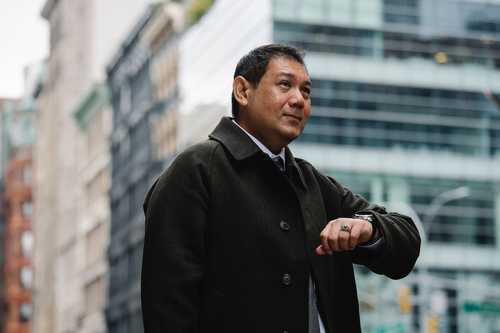If you are a foreign national engaged to a US citizen, you can apply for a fiance visa which will allow you to travel to the United States and get married. How does the fiance visa work? Undergoing the fiance visa process will allow you to come to the United States within 6 months of the visa approval. Once you enter the US, you will have 90 days to marry your fiance. Once you are married, you can apply for lawful permanent residence and thus obtain the right to live and work in the United States. Your fiance visa application on its own does not entitle you to a green card. However, foreign nationals married to US citizens can, through their marriage, eventually become full US citizens.
The K-1 fiance visa process is lengthy, complex, and a little daunting. It might be challenging to navigate it on your own, especially if you do not know how to apply for a fiance visa. We have compiled a comprehensive guide to the fiance visa steps that we hope will help you understand the fiance visa process and will provide answers to some of the frequently asked questions regarding the fiance visa application, such as “How to apply for a fiance visa in the USA?” or “How to petition a fiance visa in the USA?”.
This article will hopefully serve as a detailed explanation on how to apply for a fiance visa. It will trace the K-1 fiance visa process, answering frequently asked questions such as “How does a fiance visa work?”, “How to apply for a fiance visa?”, “How hard is it to get a fiance visa?”, “How long to get a fiance visa USA?”, or “Can a green card holder file for fiance visa”, as well as providing you with guidance on how to get a fiance visa, and outlining your options regarding what to do if your fiance visa is denied.
Keep in mind that being engaged to a US citizen does not automatically guarantee you an approval of your K-1 fiance visa. While this article provides all the fiance visa steps and explains the fiance visa process and the various parts of the fiance visa application, we advise you to not apply for a fiance visa on your own. An experienced family-based immigration USA attorney can guide you through the fiance visa process and increase your chances of successfully obtaining a K-1 fiance visa.
Please note that if you are already married, you are not eligible to apply for a fiance visa. You can refer to our article about the marriage green card visa process for further information about your next steps, or schedule a consultation with our family-based immigration USA attorney.
While technically fiance refers to the male partner and fiancee refers to the female partner, in this article we have used fiance interchangeably for simplicity.
I offer confidential 30 minute & 1 hour consultations.
Schedule a consultation
Fiance visa vs spouse visa
What is the difference between a K-1 fiance visa and a marriage visa? The K-1 fiance visa allows the partner of a US citizen to enter the United States in valid status. Within 90 days of entry, the alien fiance and the US citizen must get married, or else the fiance visa expires. Also within 90 days, the alien fiance must file for adjustment of status on Form I-485 with USCIS. The marriage-based immigrant visa, on the other hand, allows the foreign national spouse of a US citizen or lawful permanent resident to enter the United States in valid status. One of the main differences between the two visas is that the K-1 fiance visa is a nonimmigrant visa, whereas the marriage-based visa is an immigrant one, and ultimately leads to permanent residence and full citizenship.
Below you can find a detailed answer to the question “How does a fiance visa work?”. Our step by step fiance visa process guide will show you through the entire fiance visa process, from how to apply for a fiance visa in the USA, to what to do if your fiance visa is denied.
K-1 Fiance Visa Checklist
If you are wondering how to get a fiance visa, here is a handy K-1 fiance visa checklist of the fiance visa steps so you can apply for a fiance visa:
· File your fiance visa application.
· File for a nonimmigrant fiance visa with a US Consulate.
· Pass a medical exam and attend your fiance visa interview.
· Travel to the United States.
· Get married.
· Apply for a green card.
Below you will find a detailed explanation of these six fiance visa steps you need to take as part of your fiance visa application.
Who can apply for a fiance visa?
Are you wondering how to petition a fiance visa in the USA? First you have to make sure that you qualify for a fiance visa. You may be eligible to apply for a fiance visa to the United States for your foreign national fiance if you satisfy the following requirements:
1. You are a U.S. citizen. Lawful permanent residents are not allowed to sponsor a foreign national fiance for a fiance visa application.
2. You must intend to marry your fiance, once she/he enters the United States in K-1 status. You can either provide concrete proof of this intention, such as invitations or venue bookings, or you can provide signed statements confirming your intent to marry within 90 days, under penalty of perjury. In other words, wedding planning is a vital part of the fiance visa process and will help strengthen your fiance visa application.
3. You and your fiance are both single and free to marry in the United States. This means that any previous marriages must be legally terminated by divorce, death, or annulment. Same-sex couples are eligible to apply for a fiance visa, even if same-sex marriage is not allowed in the foreign fiance’s country of origin.
4. You can provide proof that your relationship is genuine and authentic, and not entered into for the purposes of evading United States immigration law. The bulk of your fiance visa application should consist of documentary evidence of the validity of your relationship.
5. You and your fiance must have seen each other in person on at least one occasion within a 2-year period of submitting your fiance visa application. You can waive the 2-year in-person meeting requirement if you can demonstrate that:
a. Such a meeting would violate strict and long-established customs of the alien fiance’s culture dictating that the couple cannot meet prior to marriage; or
b. Such a meeting would result in extreme hardship to the US citizen partner.
6. The US citizen partner must meet at least 100% of the federal income poverty guidelines when applying for a fiance visa.
7. You are not located in the United States when you apply for a fiance visa. The K-1 fiance visa is a nonimmigrant visa that allows you to travel to the United States. Applying for a fiance visa while in the USA is not an option and the K-1 fiance visa process might not be suited for your particular case.
8. If you do not satisfy all of these requirements, you might have to consider the marriage-based immigrant visa option, since you may not be eligible to apply for a fiance visa.
If you satisfy all of the requirements above, read our step by step fiance visa process explanation on how to get a fiance visa. If you think you might not satisfy the fiance visa requirements, consult one of our family-based immigration attorneys on how to get a fiance visa, or inquire about other marriage-based immigration options.
I offer confidential 30 minute & 1 hour consultations.
Schedule a consultation
Can a green card holder file for a fiance visa?
Unfortunately, US green card holders, or lawful permanent residents, are ineligible to sponsor their foreign national fiance for a green card. If your partner is a lawful permanent resident, you can get married and then apply for a marriage-based immigrant visa, but you cannot apply for a fiance visa.
How hard is it to get a fiance visa?
A lot of people learning about how to apply for a fiance visa in the USA are often worried about this. So just how hard is it to get a fiance visa?
Right now, the COVID-19 global pandemic has made the K-1 fiance visa process somewhat harder, but as the world returns to normalcy, the K-1 fiance visa process will likely return to its pre-COVID levels of difficulty.
It is really not hard to get a fiance visa if you have a genuine, valid relationship with your fiance. If you learn how to get a fiance visa, and you follow the step by step fiance visa process explanations, your fiance visa process is likely to be smooth. However, we do recommend that you get in touch with an experienced family-based immigration attorney, so you can be certain that you have correctly followed all the fiance visa steps. We especially recommend that you reach out to a lawyer if you do not think you satisfy some of the requirements outlined above, as your K-1 fiance visa process may be delayed if you face difficulties down the road.
The Fiance Visa Process
So, how does a fiance visa work? Below you can find a detailed step by step fiance visa process explanation, outlining all the actions that you need to take in order to file your fiance visa application and a subsequent marriage-based green card application.
Step 1: The US citizen partner files Form I-129F Petition for Alien Fiance
This is the first of the six fiance visa steps that you have to take as part of the fiance visa process, and one of the most important for the fiance visa application, since it kickstarts the K-1 fiance visa process. Please note that Form I-129F cannot be filed at a US Consulate, Embassy, or USCIS office abroad. The purpose of this form is to establish that your relationship is valid and genuine. Along with the form itself, you will have to submit a filing fee of $535 and several supporting documents. For a comprehensive fiance visa checklist USA of all the supporting documents you need so submit as part of your application, check out our article on the fiance visa documents [LINK].
Step 2: The alien fiance files Form DS-160, Online Nonimmigrant Visa Application
The foreign national spouse will have to file Form DS-160, Online Nonimmigrant Visa Application. This is the actual fiance visa application. It is extremely important that the confirmation page is printed out once the application is submitted. A copy of the DS-160 confirmation page will have to be submitted at the visa interview, which is the next part of the K-1 fiance visa process.
In addition to Form DS-160, the State Department requires some supporting documents for your fiance visa application. A full list of these documents can be found in our article discussing the fiance visa documents [LINK].
Step 3: The alien fiance attends the Medical Exam and the Visa Interview
The US Consulate or Embassy in the alien fiance’s country of origin will schedule a medical exam and an interview appointment. The medical exam, the next step in the K-1 fiance visa process, will determine whether the foreign national is inadmissible to the United States on health-related grounds, such as drug addiction or communicable diseases that are a threat to public safety. The exam will be conducted by an approved medical practitioner.
The visa interview will take place at a US Consulate or Embassy in the alien fiance’s home country. This is one of the vital fiance visa steps in the K-1 fiance visa process. The interview notice will indicate the date, time, and place of the interview appointment. In most cases, the US citizen partner does not have to attend the fiance visa interview, but the interview notice will indicate whether his or her presence is required.
There is a $265 K-1 fiance visa fee, which is usually paid at the time of the interview. Each consulate or embassy has its own requirements, so you should check these in advance on the consulate or embassy’s website, but payment information will be usually included in your interview notice.
Step 4: The alien fiance passes inspection at a US port of entry
Within 6 months of obtaining a K-1 fiance visa, the foreign national fiance can seek entry into the United States at a port of entry. A K-1 fiance visa does not guarantee entry – a Customs and Border Protection officer will ultimately make the decision whether or not to allow the alien fiance into the country.
Step 5: Marriage
Once the foreign national fiance is admitted at a port of entry in K-1 nonimmigrant status, you have 90 days to get married before the K-1 status expires. This is the most exciting part of the K-1 fiance visa checklist! At this point, you will have almost reached the end of the fiance visa process. All that is left for you to do once you are married, is to apply for a green card.
Step 6: The alien spouse files Form I-485, Application for Permanent Residence or Adjustment of Status.
As soon as you are married, the foreign national spouse can file for permanent residence through a process called Adjustment of Status. This is the final of the fiance visa steps. Once you receive your green card, your K-1 fiance visa process will conclude.
In order to acquire your green card, you will have to fill out and submit Form I-485. Its purpose is to help USCIS determine whether you are inadmissible to the United States on any grounds. You will have to attend a biometrics appointment, at which USCIS will take your fingerprints in order to verify your identity.
Concurrently with Form I-485, you can also file Form I-765, Application for Employment Authorizatio so you can legally work in the United States while you await adjudication on your application for permanent residence.
Additionally, you can also file Form I-131, Application for Travel Document, which will grant you parole to travel outside of the United States while your green card application is pending.
How long to get a fiance visa to the USA?
The K-1 fiance visa process usually takes anywhere from 9 to 13 months. With COVID-19 restrictions, this processing time has been extended, and it may take upwards of 20 months for an approval of your fiance visa.
Unfortunately, premium (faster) processing is not available when you apply for a fiance visa.
More details on how long to get a fiance visa to the USA you can find in our article discussing the fiance visa timeline [LINK].
Children of fiance visa holders
If the foreign national fiance has unmarried children under the age of 21, they can be eligible for a nonimmigrant K-2 visa and come live, study, and work in the United States.
How to get a fiance visa subsidiary K-2 visa?
Their names must be included in Form I-129F, Petition for Alien Fiance. They must remain unmarried and under 21 in order to receive a nonimmigrant K-2 visa. K-2 visa holders cannot enter the United States before the K-1 fiance visa holder.
If you get married within the 90-day period, the foreign national fiance’s children may apply for permanent residence through adjustment of status, and may eventually become full US citizens.
Can you work on a fiance visa?
Theoretically, as the fiance of a US citizen, you have the right to work during the 90 days before you and your partner get married. However, in order for you to work, you have to file Form I-765, Application for Employment Authorization. It will routinely take USCIS upwards of two months to process the application, meaning that by the time you receive your Employment Authorization Document (EAD), you may no longer be eligible to work because your nonimmigrant K-1 status will have expired.
Once you are married, you can file Form I-765 concurrently with your application for permanent residence.
Failure to marry within 90 days
Your K-1 nonimmigrant status will expire at the end of the 90 days. It cannot be extended. If you are not married at the end of the 90 days, the foreign national fiance must leave the United States immediately, or they will be in violation of US immigration laws. This may result in deportation, and will affect the fiance’s future eligibility for immigration benefits.
What to do if your fiance visa is denied?
Your fiance visa may be denied. If that is the case, your interviewing officer will most likely give you an explanation for her decision. There is a number of reasons why your K-1 fiance visa may not be approved but these are the most common ones:
· Insufficient evidence of a bona fide relationship: the officer interviewing you for your fiance visa may decide that you and your partner have not provided enough evidence to establish that your relationship is genuine. Usually, you will be issued a Request for Evidence before your visa is outright denied, but it may sometimes be the case that even after an RFE has been sent, the evidence is still insufficient. An experienced family-based immigration attorney can help you prevent a situation like this.
· Fraud: your fiance visa will be denied if you are suspected of committing fraud for the purpose of evading United States immigration laws. This includes doctoring images, not disclosing your medical or criminal history, falsifying any of the supporting documents submitted with your application, falsifying income, to name a few. Any inconsistency between your application and the evidence submitted may be seen as a red flag and may result in denial of your application.
· Your fiance visa may be denied because you do not qualify for a K-1 fiance visa: you might not meet the income requirement, or the two-year meeting requirement, for example. Before submitting your petition, you should make sure that you are eligible for a fiance visa. An experienced attorney can help you determine whether you qualify, or whether you should pursue a different immigration option, like a spouse visa. If you are interested in finding out more about the spouse visa, check out our article describing the marriage-based green card process.
Can I apply for a fiance visa as a green card holder?
If you are a green card holder, you cannot apply for a fiance visa for your foreign national fiance. If you apply for a fiance visa as a green card holder, your fiance visa application will be denied.
If your fiance visa has been denied, you have three options:
· You can appeal the decision. Within 33 days of the denial, you can file Form I-290B, Notice of Appeal or Motion. This is a complex procedure, and you should consult an immigration attorney before you appeal your fiance visa application denial.
· You may start the process over and reapply for a K-1 fiance visa. If the reason for the denial was insufficient evidence, you may rectify your mistake and submit additional proof that your relationship is bona fide. You will have to undergo the entire K-1 fiance visa process from the start. Keep in mind that your fiance visa application will probably face more scrutiny this time around, since your application has been denied once.
· You can get married outside of the United States and apply for a marriage-based immigrant visa. For more information on the timeline and process for obtaining a spousal visa, refer to our article.
Although our process of fiance visa USA article explains all the fiance visa steps, as well as how to petition for a fiance visa in the USA, we strongly advise that you seek the services of an experienced family-based immigration attorney to minimize the chances of having your fiance visa application denied.
Our Fiance Visa Services
Are you a US citizen who would like to sponsor your foreign national fiance for a US visa? Are you a foreign national engaged to a US citizen who wants to, but doesn’t know how to apply for a fiance visa? Are you unsure what to do if your fiance visa is denied?
If you are wondering how to get a fiance visa, our immigration attorneys can devise a fiance visa and marriage-based green card strategy tailor-made to accommodate the particular needs of your case and prepare your fiance visa application and subsequent marriage-based green card application in accordance with all the pertinent immigration rules.
To schedule a consultation with one of our immigration attorneys, please click here and click on “Schedule a Consultation.” You can also email us at [email protected], or call us at (212) 220-6652.
During your consultation, our family-based immigration lawyer will provide an honest assessment of your case, and a recommendation about your next steps.
I offer confidential 30 minute & 1 hour consultations.
Schedule a consultation
Disclaimer: This blog article is provided by Pandev Law, LLC for general educational and informational purposes only. Although this article discusses general legal issues, it does not constitute legal advice nor does it establish an attorney-client relationship. No reader should act or refrain from acting on the basis of any information presented in this article, or elsewhere on this website, without seeking the advice of appropriate legal counsel, or other professional counsel, licensed in the relevant jurisdiction. Pandev Law, LLC expressly disclaims any and all liability with respect to any actions taken, or not taken, based on any content of this article or website. This blog article may constitute attorney advertising. Prior results do not guarantee a similar outcome.














